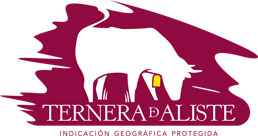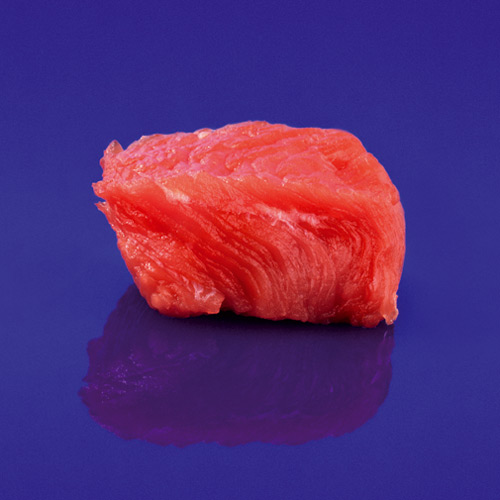
MEAT | TERNERA DE ALISTE | LECHAZO DE CASTILLA Y LEÓN | CHORIZO ZAMORANO

I.G.P. Ternera de Aliste
|
C/ Barrio Nuevo, 9 49510 Fonfría Zamora |
tf fx e- w- |
980 680 333 980 680 333 teneradealiste@terneradealiste.es www.terneradealiste.es |
 The Eastern districts of the Zamora province maintain their traditional stockbreeding culture, using extensive farming methods, with the livestock distributed among relatively small farms which are almost always family businesses. The cattle is therefore reared in a traditional way and their diet basically consists of natural pasture and mother's milk.
The Eastern districts of the Zamora province maintain their traditional stockbreeding culture, using extensive farming methods, with the livestock distributed among relatively small farms which are almost always family businesses. The cattle is therefore reared in a traditional way and their diet basically consists of natural pasture and mother's milk.
The production of "Ternera de Aliste" veal has been protected by the Junta de Castilla y León as a Indicación Geográfica Protegida (IGP) since 2017. It includes three abattoirs and several stockbreeders and butchers. APTA is responsible for carrying out rigorous controls and inspecting products.
Characteristics
"Ternera de Aliste" veal is known for being very tender, juicy and flavoursome, although this depends on the age of the animal and the diet of each authorised category.
Such characteristics are achieved mainly through diet (high quality natural products), rearing methods (family-run extensive stockbreeding farms) and production control (each cow has only one calf each year).
Categories
"Ternera de Aliste" meat comes from animals which are suitable for meat production. Three products are distinguished, according to the breed and rearing method:
Ternera Lechal de Aliste
Carne de color rosa pálido, muy tierna y jugosa. Los animales acompañan a su madre durante toda su vida productiva y no se destetan hasta su sacrificio a los 7 meses. Proceden de cruces de hembras Pardo Alpina con machos de aptitud cárnica tipo Limusín o Charolés.
Ternera Pastera de Aliste
Carne
de color rosa fuerte, jugosa y de gran sabor, procedente de animales que tras un primer período de su vida en el campo, son destetados y cebados en cebadero particular del ganadero hasta su sacrificio (hembras 9 meses y machos 11 meses). Proceden de cruces de animales de aptitud cárnica tipo Charolés y Limusín.
Ternera Autóctona de Aliste
Carne
de color rojo intenso procedente de animales de las razas autóctonas Alistana-Sanabresa y Sayaguesa en pureza, con unas formas de manejo similares a la Pastera. Sacrificio: las hembras a los 10 meses y los machos a los 12.
"Ternera de Aliste" meat comes from animals which are suitable for meat production. Three products are distinguished, according to the breed and rearing method:
Ternera Lechal de Aliste
Pale pink meat, very tender and juicy. The animals remain with their mother during their entire productive life and are slaughtered at the age of 7 months, without being weaned. They are the result of crossing Pardo Alpina females with meat-breed males such as Limusin or Charolais.
Ternera Pastera de Aliste
Strong pink meat, juicy and flavoursome. The animals spend the first part of their life in the countryside before being weaned and fattened in the stockbreeder’s feeding place until they are slaughtered (females at 9 months and males at 11 months). They are the result of crossing meat-breeds such as Charolais and Limusin.
Ternera Autóctona de Aliste
Dark red meat. The animals belong to the pure indigenous breeds Alistana-Sanabresa and Sayaguesa and are reared in a similar way to “Ternera Pastera”. The females are slaughtered at the age of 10 months and the males at 12 months.


 ESP
ESP ENG
ENG POR
POR